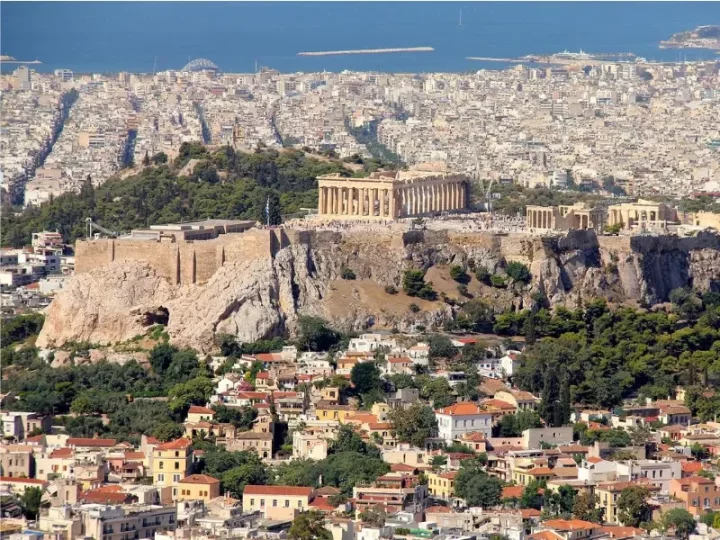
Thousands of years ago, humanity's earliest civilisations emerged in ancient cities. While many of these cities have vanished, some of these towns have survived the test of time, transforming into vibrant modern capitals while maintaining their rich history.
Here are the 10 oldest cities in the world.
1. Jericho, West Bank
Many people believe that Jericho is the oldest city in the world, with settlements having existed there since between 9600 and 9000 BCE. Built approximately 8000 BCE, the Wall of Jericho is the oldest known city wall and one of the city's archaeological attractions.
Jericho has been continually occupied for centuries, during which time it has seen the rise and fall of civilizations. Even with today's political unrest, Jericho continues to offer a fascinating view into the first urban life of humans.
2. Byblos, Lebanon
Byblos, one of the world's oldest cities, was founded between 8800 and 7000 BCE. It gained recognition as a significant Phoenician commerce centre, especially for the shipment of cedar wood to ancient Egypt.
In addition, Byblos is recognised for creating the Phoenician alphabet, which served as a model for contemporary writing systems. It is a thriving tourist destination today, attracting tourists from all over the world with its attractive coastline setting and historic ruins.
3. Plovdiv, Bulgaria
Plovdiv is among the oldest cities in Europe, with Neolithic settlements existing as early as 6000-5000 BCE. Thracians, Greeks, Romans, Byzantines, and Ottomans have all had an impact on this culturally diverse place. Roman theatres and ancient buildings are among the more than 200 ancient structures in Plovdiv, which is well-known for its archaeological riches.
4. Aleppo, Syria
Aleppo is one of the oldest cities in the world, having existed since around 5000 BCE. It flourished in the past because of its advantageous location as a commerce hub between Mesopotamia and the Mediterranean. Aleppo has engaged in several constructions to repair the city damage caused during the Syrian Civil War.
5. Argos, Greece
Argos has been inhabited for around 7,000 years and played an important role in Greek history. It was a stronghold throughout the Mycenaean period and later thrived under Roman and Byzantine control. Before Spartan influence, the city was a major power in the Peloponnese.
Argos is rooted in Greek mythology, with Perseus, Zeus' son, thought to have been born there. Today, the city is noted for its agricultural exports, which include olives and the distinctive Argetiko melon.
6. Jerusalem
Jerusalem is a city with historical and theological significance, dating back to the early Bronze Age, about 4500-3500 BCE. It has been a primary focus for Judaism, Christianity, and Islam, making it a hotly debated and hallowed location. Jerusalem has been destroyed, attacked, and rebuilt several times throughout its history. The city is packed with more religious and historical sites than any other city in the world.
7. Susa, Iran
Susa, now known as Shush, is one of the Middle East's oldest cities, with traces of settlement reaching back to 4200 BCE. The city was a major hub of the ancient Elam civilisation and was influenced by Mesopotamian cultures such as Uruk. Its history is separated into three distinct periods: Susa I, II, and III, each representing a significant cultural and architectural achievement.
Susa, mentioned in some of the oldest Sumerian documents, was an important commercial and cultural hub in antiquity, laying the groundwork for its long-lasting legacy.
8. Athens, Greece
Athens, known as the cradle of Western civilisation, has been inhabited since the Neolithic period, approximately 4000 BCE. It became the hub of Ancient Greece, flourishing during its Golden Age when democracy and cultural progress impacted much of the modern world.
The city is named after the goddess Athena, who, according to legend, bestowed the olive tree to represent peace and wealth. Today, Athens is a bustling historical city with buildings such as the Acropolis and the Daphni Monastery, both of which are UNESCO World Heritage sites.
9. Luxor, Egypt
Luxor, which was built on the foundations of ancient Thebes, is a treasure mine of Egyptian history. Around 3200 BCE, Thebes was created as a small trading centre before becoming Egypt's capital during the New Kingdom.
The city became a symbol of the Egyptian Empire's richness and strength, with landmarks including the Karnak and Luxor temples, the Valley of the Kings, and the Valley of the Queens. Luxor is a UNESCO World Heritage Site and a popular tourist attraction today. Its historical significance was rediscovered in the 18th century when Napoleon Bonaparte's archaeologists restored Thebes to prominence.
10. Damascus, Syria
Damascus, one of the most famous cities in the Middle East, has been a cultural and commercial centre for centuries.
While its exact creation date is unknown, civilisations in the area date back as far as 10,000 BCE, with the city's centre thought to have been constructed about 3000-2000 BCE. Damascus grew under the authority of several civilisations, including the Greeks, Romans, and Ottoman Turks, each leaving their architectural and cultural imprints.
Damascus is now Syria's capital, as well as a major cultural and commercial hub. Interestingly, it is also home to the world's largest restaurant, the Damascus Gate Restaurant, which can accommodate over 6,000 people.

















Comments